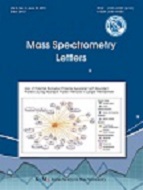
- P-ISSN 2233-4203
- E-ISSN 2093-8950

KPLA-012, a benzopyranyl 1,2,3-triazole compound, is considered a potent HIF-1α inhibitor based on the chemical library screening, and is known to exhibit anti-angiogenetic and anti-tumor progressive effects. The aim of this study was to investigate the pharmacokinetic properties of KPLA-012 in ICR mice and to investigate in vitro characteristics including the intestinal absorption, distribution, metabolism, and excretion of KPLA-012. The oral bioavailability of KPLA-012 was 33.3% in mice. The pharmacokinetics of KPLA-012 changed in a metabolism-dependent manner, which was evident by the low recovery of parent KPLA-012 from urine and feces and metabolic instability in the liver microsomes. However, KPLA-012 exhibited moderate permeability in Caco-2 cells (3.1 × 10 -6 cm/s) and the metabolic stability increased in humans compared to that in mice (% remaining after 1 h; 47.4% in humans vs 14.8% in mice). Overall, the results suggest that KPLA-012 might have more effec- tive pharmacokinetic properties in humans than in mice although further studies on its metabolism are necessary.
Park, K.. (2017). . Oncotarget, 8, 7801-.
Semenza, G. L.. (2014). . Annu. Rev. Pathol., 9, 47-. http://dx.doi.org/10.1146/annurev-pathol-012513-104720.
Semenza, G. L.. (2012). . Adv. Exp. Med. Biol., 758, 1-.
Kim, K. H.. (2013). . Biochem. Biophys. Res. Commun., 441, 399-. http://dx.doi.org/10.1016/j.bbrc.2013.10.075.
Li Chen. (2009). Hypoxia and angiogenesis: regulation of hypoxia-inducible factors via novel binding factors. Experimental and Molecular Medicine, 41(12), 849-857.
송임숙. (2017). Comparison of Gastrointestinal Permeability of Caffeine, Propranolol, Atenolol, Ofloxacin, and Quinidine Measured Using Ussing Chamber System and Caco-2 Cell Monolayer. Mass Spectrometry Letters, 8(2), 34-38. http://dx.doi.org/10.5478/MSL.2017.8.2.34.
Huang, Z.. (2015). . Drug Des. Devel. Ther., 9, 4319-.